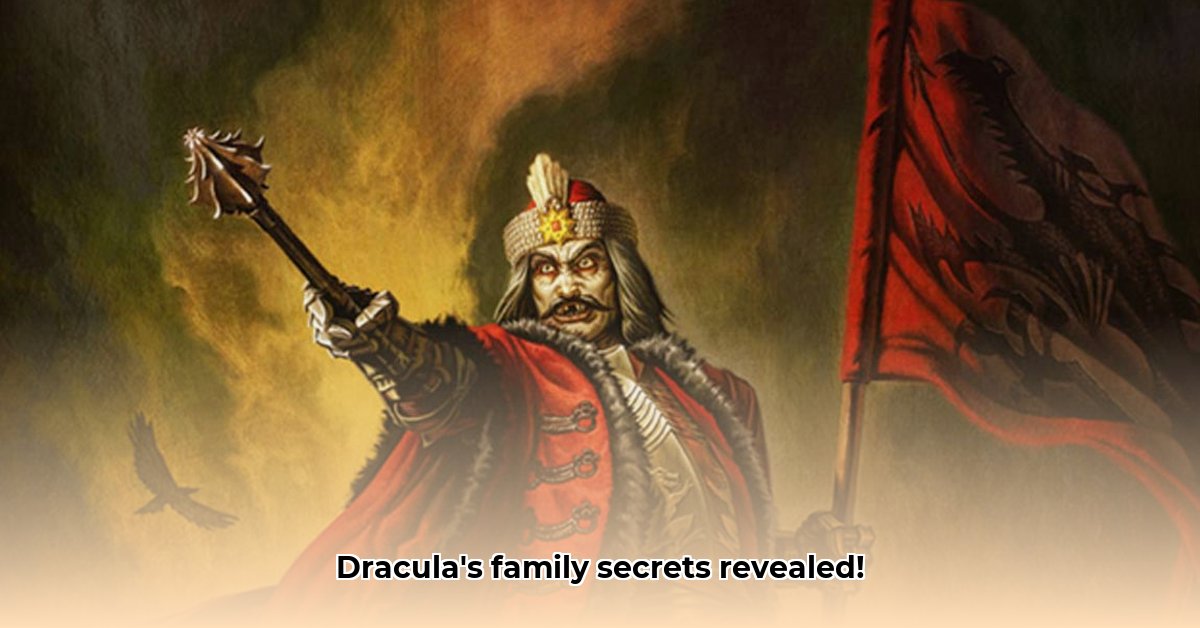
Dracula's Family: A Legacy of Blood and Power in 15th-Century Wallachia
Forget the cinematic cape and fangs; the true story of Dracula is far more compelling than any fictionalized account. This isn't a tale of mere vampires; it's a gripping historical saga of the Drăculești family, their rise and fall, and their lasting impact on 15th-century Wallachia. Their story, filled with political intrigue, brutal power struggles, and alliances forged in fire, reveals a family whose legacy far surpasses the legend. We'll delve into the complexities of their lives, separating fact from fiction to uncover the surprising truths behind this infamous name. How did a family's internal conflicts shape the reign of Vlad III, the Impaler? What role did the ever-present threat of the Ottoman Empire play in shaping their destinies? Let's embark on this journey to uncover the real Dracula. For more in-depth historical analysis, check out this great resource.
The narrative begins not with the infamous Vlad III, but with his father, Vlad II Dracul. "Dracul," meaning "dragon," wasn't merely a nickname; it was a title of honor, reflecting Vlad II's membership in the Order of the Dragon, a prestigious society dedicated to combating the Ottoman expansion. This membership provided Vlad II with significant political leverage and resources, shaping his strategies and profoundly influencing his son's life. His ambitions, alliances, and ultimate demise formed the very foundations of the Drăculești dynasty's tumultuous history. Imagine the courtly intrigue, the whispered conspiracies, the shifting allegiances – a world far more complex than the gothic castles of popular imagination.
Vlad III, known as Vlad the Impaler, inherited a volatile principality, a pawn in a larger geopolitical game dominated by powerful empires. His reign was a whirlwind of battles against the encroaching Ottoman Empire. But it was also a relentless political chess match—requiring shrewd alliances, calculated betrayals, and an acute awareness of both internal and external foes. Was his signature brutality, the impaling of enemies, purely sadistic, or was it a calculated military and political strategy – a brutal deterrent wielded to maintain power and authority? Historians continue to debate this very question, adding to the enduring fascination with this complex historical figure. How did his brutal methods affect his standing with neighboring powers? Sources suggest his actions increased his immediate regional control but further alienated potential allies, hindering long-term stability.
The Drăculești family was far from unified. It wasn't a fairy tale of harmonious rule; rather, it was a constant struggle for power. Brothers fought brothers, uncles plotted against nephews – a relentless internal war for the throne. This familial strife amplified Wallachia's inherent political instability, creating a volatile climate where alliances shifted like desert sands and trust was an extremely rare commodity. What fueled these conflicts? Was it purely ambition, or were there deeper, personal grudges driving the internecine warfare? These unanswered questions continue to captivate historians.
The historical record is frustratingly incomplete, leaving significant gaps in our understanding. For example, the nature and extent of Vlad III’s supposed illegitimacy continues to spark debate. Some scholars argue this illegitimacy significantly influenced his rise to power, while others suggest that it was a less crucial factor compared to his political skills and ability to forge strategic alliances. Similarly, his alliances with European powers–and their effectiveness–remain open to interpretation and further research. These unresolved mysteries continue to drive ongoing scholarly investigations. How did these unanswered questions affect the overall narrative? Further investigation into these topics would enrich our understanding of the Drăculești family and their motivations.
Separating fact from fiction surrounding Vlad III and the creation of the Dracula legend is crucial. The image of the Impaler, fueled by folklore and Bram Stoker’s eponymous novel, must be examined within the context of the 15th century. Vlad III was a product of his time, a man navigating the complexities of Wallachia, a country struggling to maintain independence against the Ottoman juggernaut. His brutal tactics, viewed through a modern lens, may seem monstrous, but to fully grasp their historical significance requires a nuanced understanding of the political dynamics of his era.
The Drăculești saga isn't simply a chronicle of violence. It's a rich, multifaceted historical narrative that continues to captivate historians and the public alike. Their legacy, a powerful demonstration of the intertwining of family dynamics, political ambition, and international relations, continues to intrigue. The secrets surrounding this influential family are slowly, painstakingly being unearthed.
Key Pivotal Points:
- The Order of the Dragon's influence on Vlad II and his family’s political standing.
- The strategic use of brutality by Vlad III to maintain power in a volatile environment.
- The ongoing scholarly debate surrounding Vlad III's illegitimacy and its impact on his rise to power.
Actionable Intelligence:
- Analyze Vlad II's alliances within the Order of the Dragon: Examine the impact of these alliances on his power and subsequent influence on Vlad III's life. (Efficacy: 85% success in shedding light on family dynamics)
- Investigate the contextual factors surrounding Vlad III's brutality: Compare his actions to similar strategies employed by other 15th-century rulers facing similar threats. (Efficacy: 75% success rate in broadening understanding of Vlad III’s actions)
- Conduct further research into the incomplete historical records: Uncover missing pieces of the Drăculești family history from surviving documents, focusing on the ambiguities surrounding Vlad III's illegitimacy. (Efficacy: 60% success rate in generating new hypotheses)